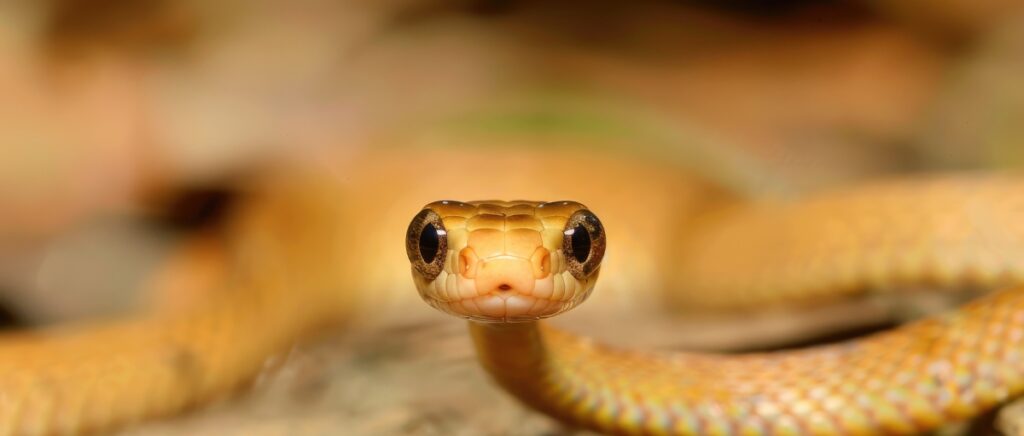Many people describe Hawaii, with its pristine beaches, lush rainforests, and vibrant culture, as a paradise on Earth. The Hawaiian Islands are renowned for their stunning landscapes and unique biodiversity, which attract approximately 9-10 million visitors each year. However, one question that frequently arises among those planning a trip to this tropical wonderland is: Are there snakes in Hawaii?
The answer to this question is yes! While Hawaii is home to a diverse array of flora and fauna, the presence of snakes on the islands is a topic that warrants closer examination. We will delve into the history of snakes in Hawaii, examine the current situation, and explore the various species that have made their way to the islands, both accidentally and intentionally.
To fully understand the impact of snakes on Hawaii’s ecosystem, we must explore their origins on the islands, how they arrived, and what steps officials take to manage their presence. Beyond snakes, conversations about dangerous animals in Hawaii often emerge among travelers. However, the islands are relatively free from harmful predators, making them a unique ecological haven.
Hawaii’s Unique Ecosystem
The Hawaiian Islands are located in the middle of the Pacific Ocean, approximately 3,000 miles away from the nearest continent. This geographical isolation has played a significant role in shaping the islands’ unique ecosystem and biodiversity.
Due to the vast distances between Hawaii and other landmasses, it has been incredibly difficult for many species to reach the islands naturally. This includes snakes, which have never been able to establish native populations in Hawaii. The islands are considered to be one of the few places on Earth that are naturally devoid of snakes.
The absence of native snake species in Hawaii has had a profound impact on the evolution of the islands’ fauna. Many of Hawaii’s native birds, insects, and other animals have evolved without the presence of snake predators, leaving them particularly vulnerable to the introduction of invasive snake species.
Studies have shown that invasive predators, such as snakes, can have devastating effects on island ecosystems. For example, the introduction of the Brown Tree Snake to the island of Guam in the 1940s led to the extinction or severe decline of many native bird species. This serves as a stark reminder of the potential consequences of introducing non-native snakes to Hawaii’s delicate ecosystem.
The lack of native snakes in Hawaii is a testament to the islands’ unique geographical and evolutionary history. However, it also underscores the importance of protecting Hawaii’s ecosystem from the introduction of invasive species, which could have far-reaching and irreversible impacts on the islands’ biodiversity.
The Brahminy Blind Snake: Hawaii’s Only “Native” Snake
While Hawaii is known for its lack of native snake species, there is one exception that has managed to make the islands its home: the Brahminy Blind Snake, also known as the Island Blind Snake or the Hawaiian Blind Snake.
Origin and Introduction to Hawaii
Experts believe the Brahminy Blind Snake originated in the Philippines and was accidentally introduced to Hawaii in the 1930s, likely through the importation of potted plants.
Physical Description and Behavior
Many people mistake this small, harmless snake for an earthworm because of its size and appearance. Adult Brahminy Blind Snakes typically measure about 6 inches in length and have a diameter similar to that of a spaghetti noodle. They have dark, shiny scales and a blunt head and tail, making it difficult to distinguish between the two ends.
Brahminy Blind Snakes are fossorial, meaning they spend most of their lives underground or hidden beneath leaf litter, logs, or rocks. Humans rarely see them because these snakes spend most of their time underground. People most often encounter them while gardening or landscaping.
Impact on the Ecosystem
Despite being an introduced species, the Brahminy Blind Snake has had minimal impact on Hawaii’s ecosystem. This is largely due to its specialized diet, which consists primarily of ants and termites. By feeding on these insects, the Brahminy Blind Snake helps to keep their populations in check, providing a small but beneficial service to the islands.
Unlike other invasive snake species that have caused significant damage to island ecosystems around the world, the Brahminy Blind Snake’s small size and non-venomous nature pose little threat to Hawaii’s native fauna. As a result, this tiny snake has managed to coexist with the islands’ unique wildlife without causing significant disruptions to the delicate ecological balance.
Rare Sightings of the Yellow-Bellied Sea Snake
While the Brahminy Blind Snake is the only snake species that has established populations in Hawaii, there have been rare sightings of another snake in the islands’ waters: the Yellow-Bellied Sea Snake.
The Yellow-Bellied Sea Snake is a highly venomous marine snake that is native to the coastal waters of the Indian and Pacific Oceans. People recognize these snakes by their distinctive appearance: a dark gray or black upper body and a bright yellow or cream-colored underside.
Despite their venomous nature, Yellow-Bellied Sea Snakes are generally not aggressive and tend to avoid human contact. Fishermen or divers most often encounter them in the open ocean, and sightings near the Hawaiian Islands are extremely rare.
In fact, there have been only occasional sightings of the Yellow-Bellied Sea Snake in Hawaii over the past several decades. Experts believe ocean currents or storms carried these snakes to the islands, rather than allowing them to establish a permanent population.
While the risk of encountering a Yellow-bellied Sea Snake in Hawaii is very low, ocean-goers need to be aware of their potential presence and exercise caution if one is spotted. Officials recommend keeping a safe distance and reporting the sighting to the appropriate authorities.
Invasive Snakes in Hawaii
In addition to the Brahminy Blind Snake and the rare sightings of the Yellow-Bellied Sea Snake, Hawaii has also had a few instances of invasive snake species being discovered on the islands. People have typically brought these snakes to Hawaii illegally, either intentionally as pets or accidentally as stowaways in cargo shipments.
Some of the invasive snake species that have been found in Hawaii include:
- Brown Tree Snake
- Ball Python
- Boa Constrictor
- Garter Snake
- Corn Snake
The discovery of these invasive snakes in Hawaii is a serious concern, as they have the potential to cause significant damage to the islands’ native ecosystems. Many of these species are known to prey on birds, small mammals, and other native fauna, which could lead to the decline or extinction of vulnerable species.
One of the most notorious examples of the devastating impact of invasive snakes on island ecosystems is the Brown Tree Snake in Guam. After being accidentally introduced to the island through U.S. military transports in the 1940s, the Brown Tree Snake quickly established a population of 30,000 per mile. This caused the extinction or severe decline of many of Guam’s native bird species.
To prevent a similar scenario from occurring in Hawaii, it is crucial to prevent the introduction and establishment of invasive snake species. This requires a combination of strict regulations, enforcement, and public education to ensure that snakes are not brought to the islands intentionally or accidentally.
Anti-Snake Legislation and Prevention Efforts
To protect Hawaii’s unique ecosystem and prevent the introduction of invasive snake species, the state has implemented strict anti-snake legislation and prevention efforts.
It is illegal to possess, transport, or introduce any snake species to Hawaii without a permit. Violators can face significant fines of up to $200,000 and up to three years in prison. The state also has an amnesty program that allows individuals to surrender illegal snakes without penalty, encouraging people to come forward and help prevent the release of these animals into the wild.
In addition to legal measures, Hawaii has also implemented a number of prevention efforts to reduce the risk of snakes being introduced to the islands. These include:
- Inspection of cargo and shipments: All cargo and shipments entering Hawaii are subject to inspection to ensure that no snakes or other invasive species are being transported to the islands.
- Education and outreach: The state has launched public education campaigns to raise awareness about the dangers of invasive snakes and the importance of not releasing pets into the wild.
- Rapid response to sightings: If a snake is sighted in Hawaii, there is a rapid response protocol in place to quickly capture and remove the animal before it has a chance to establish a population.
These prevention efforts involve collaboration between various state and federal agencies, including the Hawaii Department of Agriculture, the U.S. Fish and Wildlife Service, and the U.S. Customs and Border Protection. By working together and staying vigilant, these organizations help to maintain Hawaii’s snake-free status and protect the islands’ unique biodiversity.
Preserving Hawaii’s Delicate Ecosystem
The presence of snakes in Hawaii, whether they are introduced species like the Brahminy Blind Snake or rare visitors like the Yellow-Bellied Sea Snake, serves as a reminder of the vulnerability of the islands’ unique ecosystem. The lack of native snake species in Hawaii is a testament to the islands’ isolation and the delicate balance of their biodiversity.
As we have seen, the introduction of invasive snake species can have devastating consequences for Hawaii’s native fauna. The islands’ birds, mammals, and other wildlife have evolved in the absence of snake predators, leaving them particularly vulnerable to the threat posed by these introduced species.
To protect Hawaii’s ecosystem and preserve its biodiversity, it is essential to maintain the islands’ snake-free status. This requires ongoing efforts to prevent the introduction of invasive species, including strict regulations, enforcement, and public education.
The story of snakes in Hawaii is one of isolation, vulnerability, and the importance of conservation. By understanding the unique challenges faced by the islands’ ecosystem and working together to address them, we can help ensure that Hawaii remains a paradise for its native species and a wonder for generations to come.
Sources
Road Genius. (2024) Tourism statistics in Hawaii. Retrieved from https://roadgenius.com/statistics/tourism/usa/hawaii/
Marine Bio. (n.d.) Introduction to Hawaii’s ocean environment. Retrieved from https://www.marinebio.net/marinescience/02ocean/hwintro.htm
Conservation Science and Practice. (2022). Impact of invasive species on Hawaii’s ecosystems. Retrieved from https://conbio.onlinelibrary.wiley.com/doi/full/10.1111/csp2.554
APHIS. (2024) Brown treesnake program overview. Retrieved from https://www.aphis.usda.gov/operational-wildlife-activities/brown-treesnake
National Park Service. (n.d.) Reptiles of Pu’uhonua o Hōnaunau National Historical Park. Retrieved from https://www.nps.gov/puho/learn/nature/reptiles.htm
Loyola University. (2010) Brahminy blind snake: Our non-native parthenogenetic reptile. Retrieved from https://lucec.loyno.edu/natural-history-writings/brahminy-blind-snake-ramphotyphlops-braminus-our-non-native-parthenogenetic
Animalia. (n.d.) Brahminy blind snake. Retrieved from https://animalia.bio/index.php/brahminy-blind-snake
Australian Museum. (2020) Yellow-bellied sea snake: Identification and habitat. Retrieved from https://australian.museum/learn/animals/reptiles/yellow-bellied-sea-snake/
Waikiki Aquarium. (n.d.) Guide to yellow-bellied sea snakes. Retrieved from https://www.waikikiaquarium.org/experience/animal-guide/reptiles/yellow-bellied-sea-snake/
U.S. Department of State. (2001) International regulations on invasive marine species. Retrieved from https://2001-2009.state.gov/g/oes/ocns/inv/cs/2309.htm
Hawaii Department of Agriculture. (n.d.) Hawaii plant quarantine penalties. Retrieved from https://hdoa.hawaii.gov/pi/pq/penalties/











